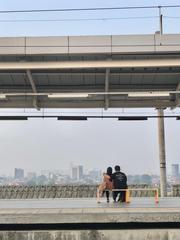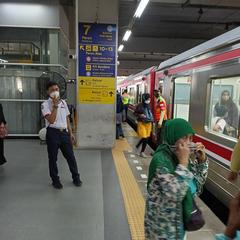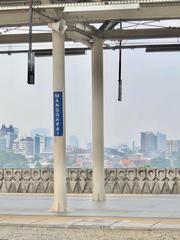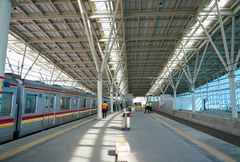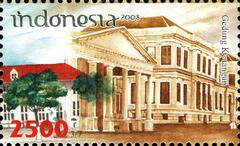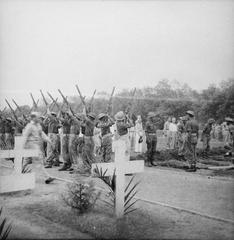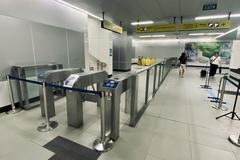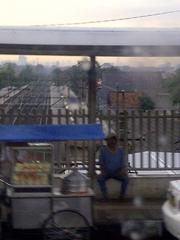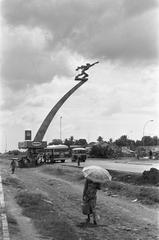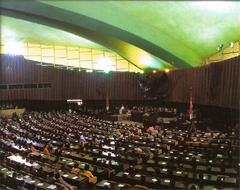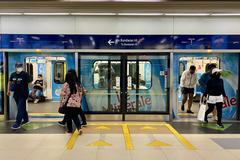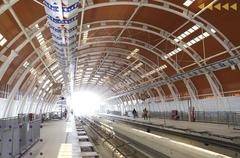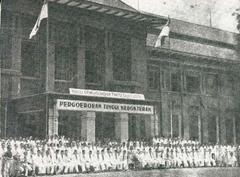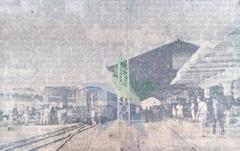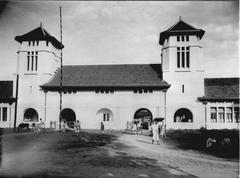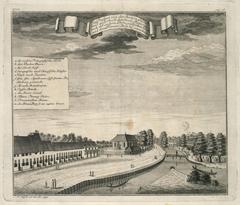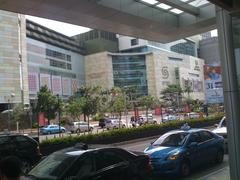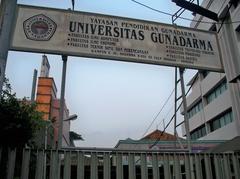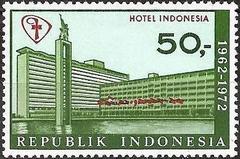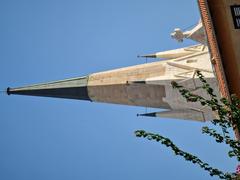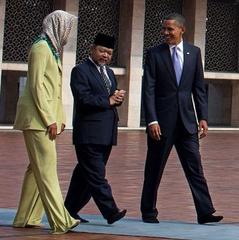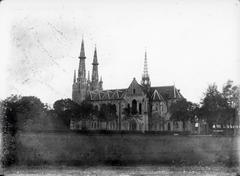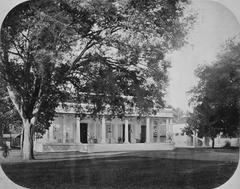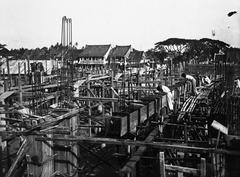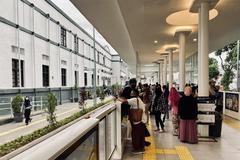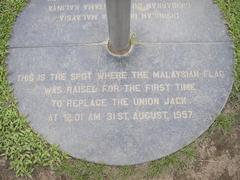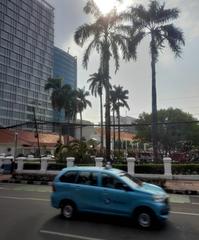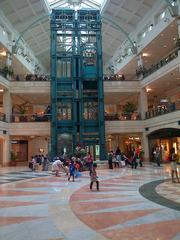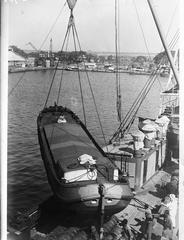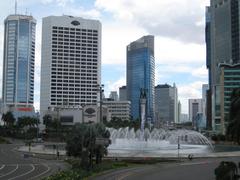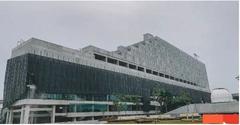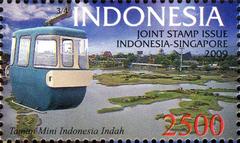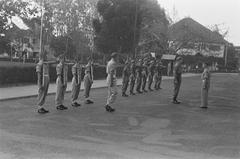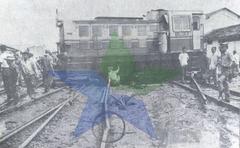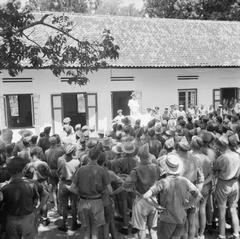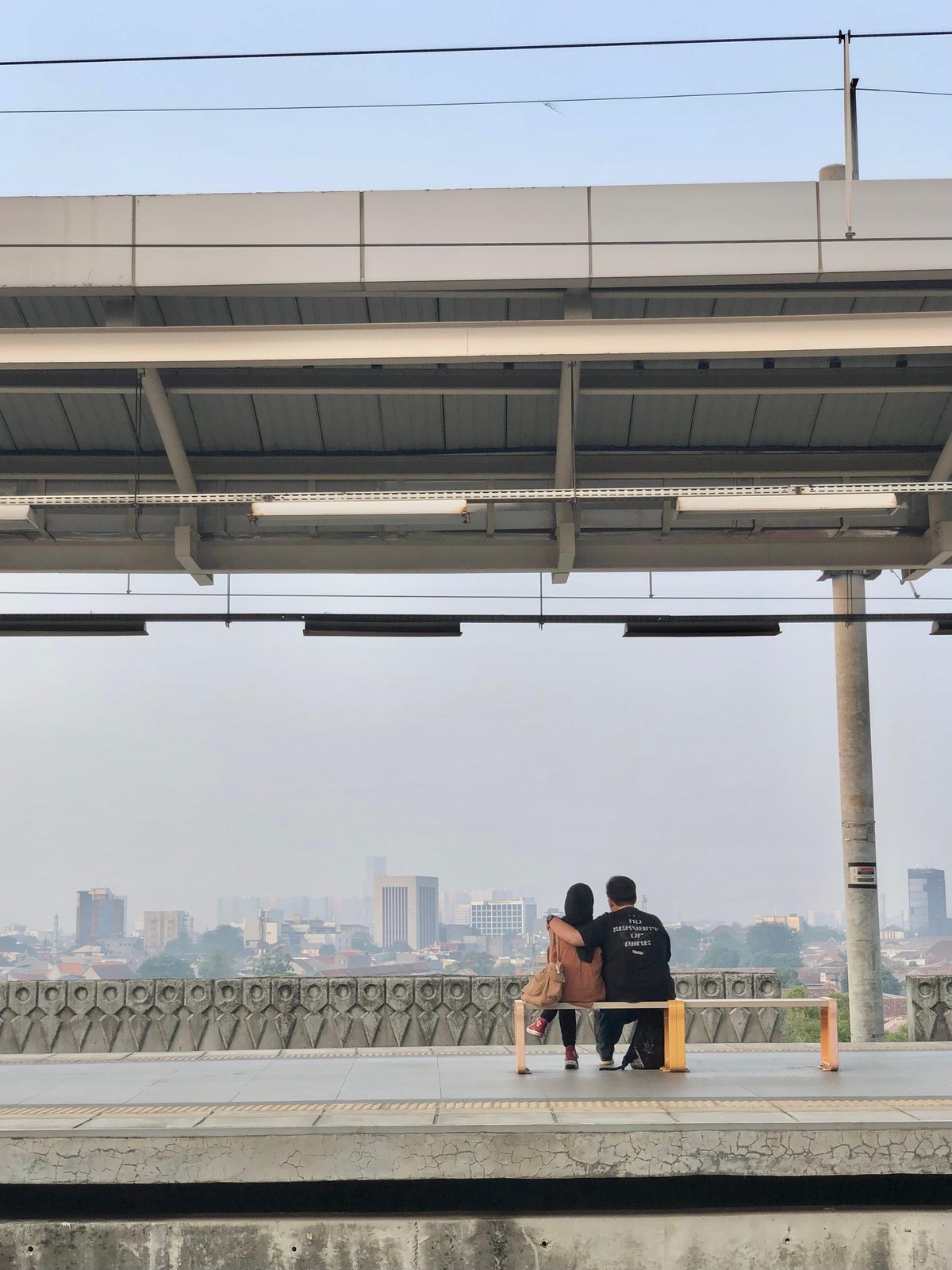
Manggarai Railway Station Jakarta: Visiting Hours, Tickets, and Comprehensive Travel Guide
Date: 14/06/2025
Introduction
Manggarai Railway Station is a cornerstone of Jakarta’s transportation network, seamlessly blending over a century of history with modern, multimodal connectivity. First inaugurated in 1918, it features preserved Dutch colonial architecture and now serves as a major hub for commuter trains, intercity services, and the Soekarno-Hatta Airport Rail Link. As Jakarta’s primary future rail terminal, Manggarai is not only a gateway for millions of daily passengers but also a living monument to Indonesia’s urban and national transformation (indonesia.go.id; detik.com; setkab.go.id; transportforjakarta.or.id).
This detailed guide offers everything you need to know for visiting Manggarai Station, from historical context and practical information about tickets and facilities to travel tips and nearby attractions.
Historical Overview
Early Origins and Colonial Development
The Manggarai area’s roots stretch back to the 17th century, inhabited by migrants from Flores before becoming a kampung in Batavia (now Jakarta). The arrival of railways transformed the landscape, with Dutch private companies and later the Staatsspoorwegen (SS) shaping the region’s infrastructure. Construction of Manggarai Station began in 1914 under architect Ir. J. Van Gendt, using teak wood due to wartime steel shortages. The station was officially inaugurated in 1918 and quickly became a rail hub for Batavia (indonesia.go.id; detik.com).
Electrification and Modernization
Manggarai pioneered railway electrification in Indonesia, with the first electric train arriving in 1927. The area included workshops and railway residences, reinforcing its importance in the city’s rail network.
Role in Indonesian History
During Indonesia’s struggle for independence, Manggarai played a discreet yet pivotal role. In 1946, national leaders Soekarno and Hatta departed from Manggarai to Yogyakarta to evade Dutch forces, underscoring the station’s significance as a site of national memory (indonesia.go.id).
Architectural Heritage
The original station building, a protected cultural heritage site, stands as a reminder of Jakarta’s colonial past amid ongoing modernization (javaprivatetour.com).
Modern Expansion
Since 2016, Manggarai has been redeveloped into Jakarta’s main rail terminal, integrated with commuter lines, intercity trains, airport rail, and future MRT/LRT connections. The station now has 18 active tracks and serves as a linchpin for multimodal transport (detik.com; transportforjakarta.or.id).
Visiting Manggarai Station: Essential Information
Operating Hours
- Station Operation: 04:00 AM – 11:00 PM daily.
- Ticket Counters and Offices: Typically 05:00 – 22:00.
- Note: Early and late travelers should confirm specific services in advance.
Ticketing Options
- KRL Commuter Line: Buy tickets at station counters, vending machines, or via the KAI Access app. Use e-money cards for seamless entry.
- Intercity Trains: Purchase at counters, via authorized agents, or online.
- Airport Rail Link: Tickets available at dedicated counters, vending machines, or online.
- LRT (from 2027): Will be integrated with Jakarta’s e-ticketing system (PwC Indonesia, 2024).
Tip: Avoid queues by purchasing tickets online or through mobile apps, especially during peak hours (06:00–09:00, 16:00–19:00).
Station Facilities
- Spacious, air-conditioned waiting lounges (including a special lounge for airport train passengers).
- Clean restrooms, including accessible toilets.
- Food outlets, convenience stores, ATMs, and free Wi-Fi.
- Luggage trolleys and porter services.
- Prayer rooms (musholla) on each level.
- Upcoming commercial spaces and hotel development (javaprivatetour.com).
Accessibility
- Elevators, escalators, ramps, and tactile paving throughout the station.
- Barrier-free access at all entrances and ticket gates.
- Multilingual signage and staff assistance for those with special needs.
Safety and Security
- CCTV surveillance and security personnel.
- Clearly marked emergency exits and first aid points.
Navigating Manggarai Station
Layout and Wayfinding
- Ground Level: Main concourse, platforms for commuter and airport trains.
- Second Level: Passenger amenities, commercial spaces, and waiting lounges.
- Third Level: Additional platforms for increased train capacity.
- Upcoming: A covered, step-free walkway directly connecting the Jakarta LRT (from 2027) (PwC Indonesia, 2024).
Digital boards display real-time train information, and staff are available for assistance.
Multimodal Connectivity
Manggarai Station is designed as an integrated hub:
- KRL Commuter Lines: Connects Bogor, Bekasi, Tangerang, and central Jakarta.
- Intercity Trains: Direct routes to Bandung, Surabaya, Yogyakarta, and beyond.
- Soekarno-Hatta Airport Rail Link: Direct access to the airport.
- TransJakarta Buses: Bus rapid transit (BRT) stops adjacent to the station.
- LRT (from 2027): Direct walkway to the LRT with 10-minute headways and a projected capacity of 80,000 daily passengers (PwC Indonesia, 2024).
Transfer Tips: Follow clear signage for each mode and use the integrated ticketing system for seamless connections.
Nearby Attractions and Urban Exploration
- Kampung Manggarai: Explore cultural heritage near the station.
- Pasar Mayestik: Traditional market with crafts and food.
- Menteng District: Renowned for colonial architecture and green parks.
- Ragunan Zoo: Family-friendly zoo a short ride away.
- Setu Babakan: Betawi cultural village.
- Matraman & Pasar Pramuka: Vibrant neighborhoods and markets, easily accessible.
- Velodrome: Sports and event complex, connected via LRT.
Travel Tips
- Avoid Peak Hours: Weekday mornings (7:00–9:00) and evenings (5:00–7:00) are busiest.
- Luggage: Bring only what you can carry comfortably; storage is limited.
- Language: Signage is bilingual; basic Indonesian phrases are helpful.
- Photography: The blend of historic and modern architecture offers excellent photo opportunities.
- Safety: Remain vigilant and secure your belongings; report lost items at the designated counter.
Frequently Asked Questions (FAQ)
Q: What are Manggarai Station’s visiting hours?
A: Daily from 04:00 AM to 11:00 PM. Ticket counters generally open from 05:00 to 22:00.
Q: How do I buy tickets?
A: At counters, vending machines, or online via KAI Access and official apps.
Q: Is the station accessible for people with disabilities?
A: Yes. Elevators, ramps, tactile paving, and accessible restrooms are available.
Q: Are there guided tours or special events?
A: Not regularly, but check official websites for heritage or anniversary events.
Q: What facilities are available?
A: Waiting lounges, food outlets, ATMs, restrooms, prayer rooms, and integrated transfer points.
Infrastructure and Future Developments
- 18 Tracks and Multi-Level Platforms: To accommodate expanding commuter, intercity, and airport services.
- Commercial and Residential Projects: Development around the station is transforming the area into a vibrant urban hub (futuresoutheastasia.com).
- Transit Oriented Development: Encourages walkable neighborhoods and reduces reliance on private vehicles.
- Vision 2045: Manggarai will anchor Jakarta’s high-capacity, fully integrated urban railway network (transportforjakarta.or.id).
Summary Table: Manggarai Station at a Glance
| Feature | Details |
|---|---|
| Location | South Jakarta, major urban and regional intersection |
| Main Functions | Hub for KRL Commuter, intercity trains, airport rail, BRT, and future LRT/MRT |
| Tracks/Platforms | 18 tracks across three levels (post-upgrade) |
| Daily Passengers | >1 million (projected post-upgrade) |
| Accessibility | Elevators, ramps, tactile paving, accessible restrooms |
| Amenities | Waiting lounges, retail, food outlets, ATMs, free Wi-Fi, prayer rooms |
| Connectivity | Direct to TransJakarta, LRT, airport rail, taxis, and ride-hailing services |
| Future Expansion | Commercial complex, hotel, new pedestrian and transport integration |
Visual References
- Jakarta Urban Railway Map (2024)
- Jakarta LRT Phase 1B Set to Operate in 2027, PwC Indonesia
- Manggarai Station in Jakarta, JakartaTravelGuide.com
Suggested image captions for publication:
- Manggarai Railway Station entrance
- Ticket counters at Manggarai Station
- Station interior showing signage and facilities
- Map of Jakarta public transport integration featuring Manggarai Station
Conclusion
Manggarai Railway Station embodies Jakarta’s evolution—honoring its colonial past while spearheading the city’s modern transportation future. With its extensive network integration, advanced facilities, and commitment to accessibility, Manggarai is more than a station; it is a vibrant urban gateway and a must-visit for travelers, commuters, and history enthusiasts. For updates, ticketing, and real-time information, use official apps like KAI Access and Audiala, and consult government and station websites.
Plan your journey smartly, explore Jakarta’s rich urban landscape, and enjoy a seamless travel experience at Manggarai Station!
Official Sources and Further Information
- Manggarai Station: The Past and the Future (indonesia.go.id)
- Sejarah Stasiun Manggarai dan 6 Fakta Menariknya (detik.com)
- Manggarai Station Expected to Integrate Transportation Modes (setkab.go.id)
- Jakarta Urban Railway Map 2024 (transportforjakarta.or.id)
- The History of Manggarai Station (javaprivatetour.com)
- Melihat Tampilan Baru Stasiun Manggarai (smartcity.jakarta.go.id)
- Jakarta LRT Phase 1B Set to Operate in 2027 (PwC Indonesia)
- Manggarai Station in Jakarta (JakartaTravelGuide.com)
- Manggarai Station Future Developments (FutureSoutheastAsia.com)
